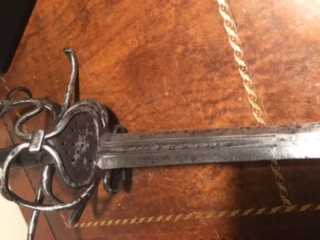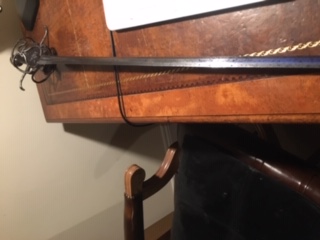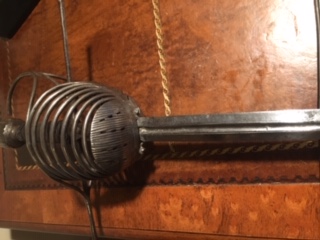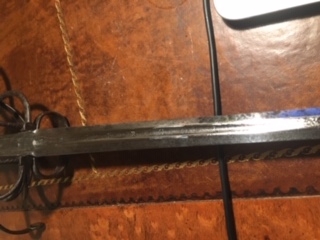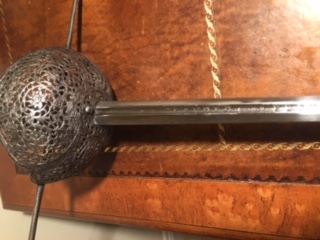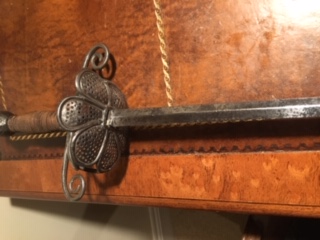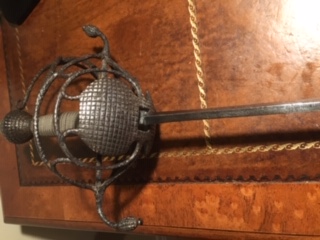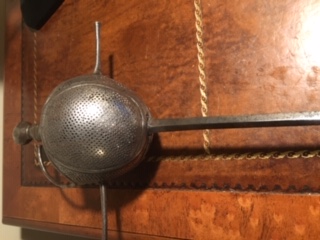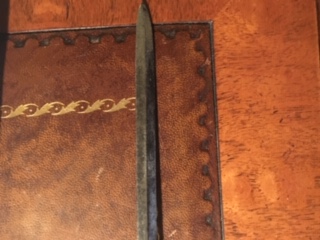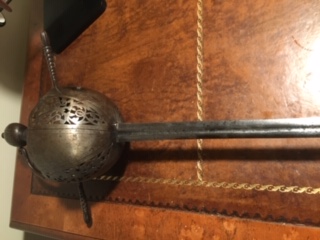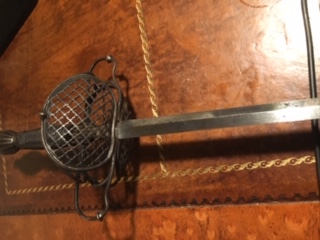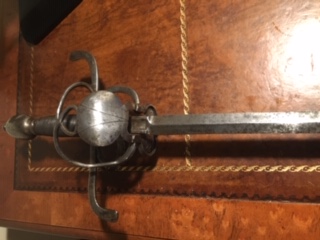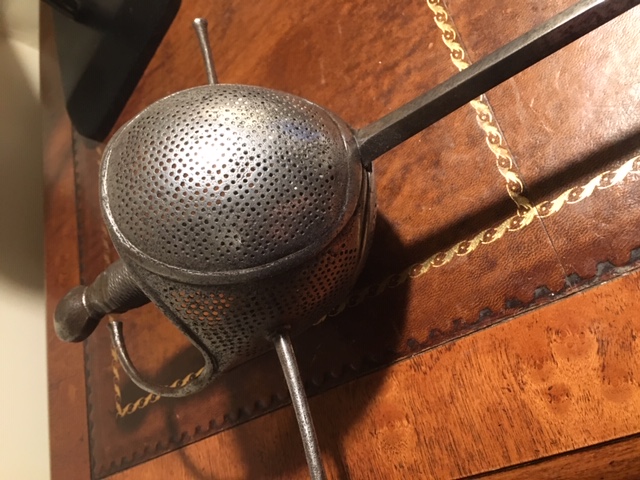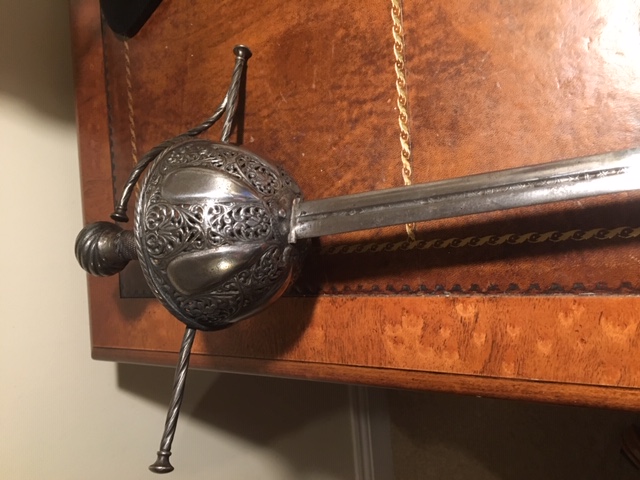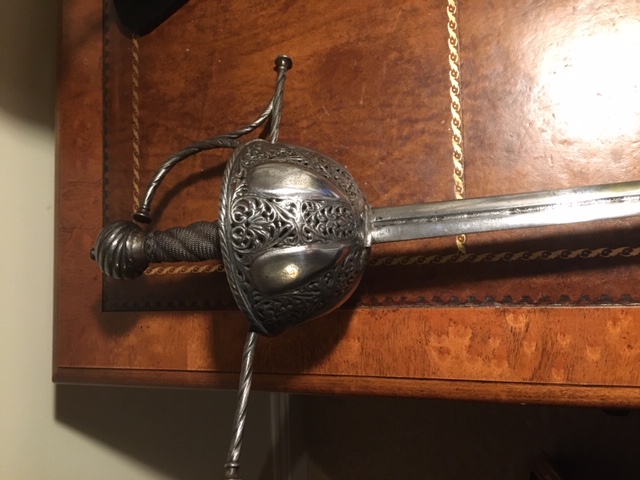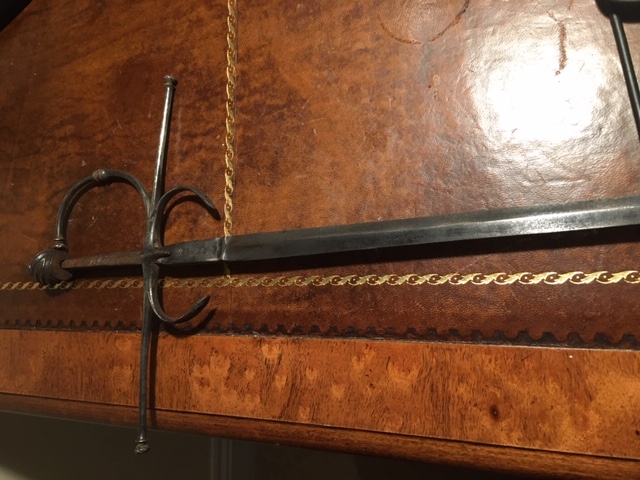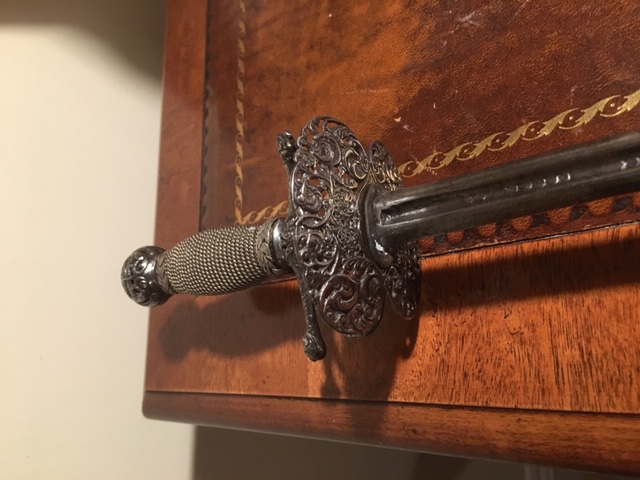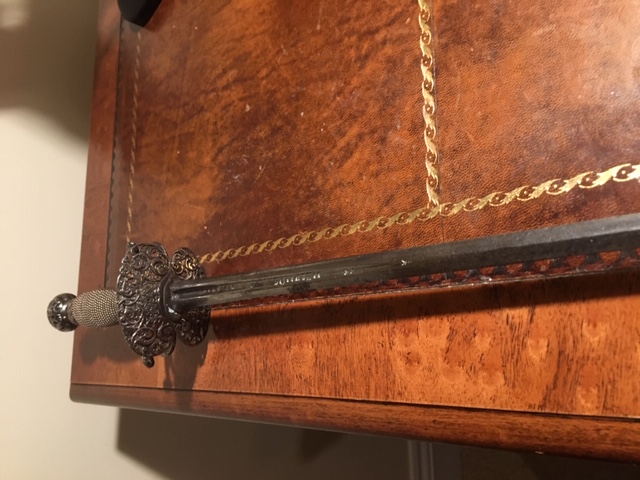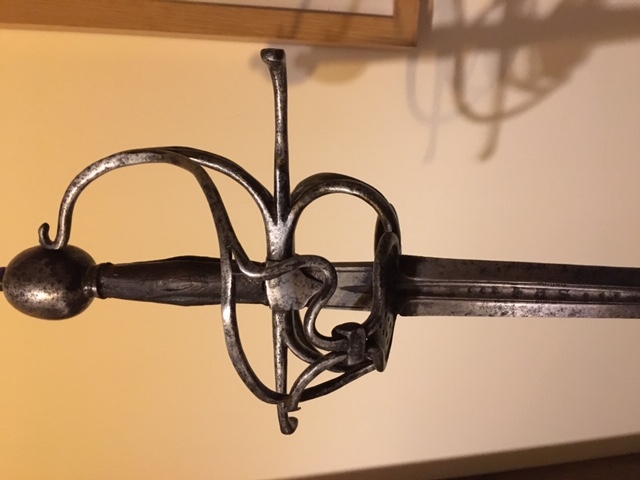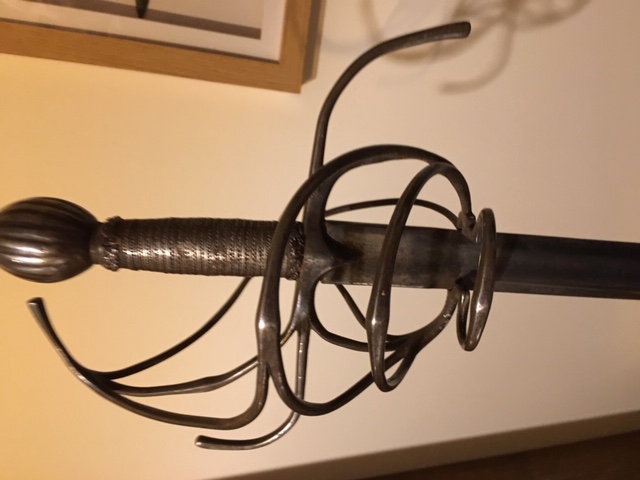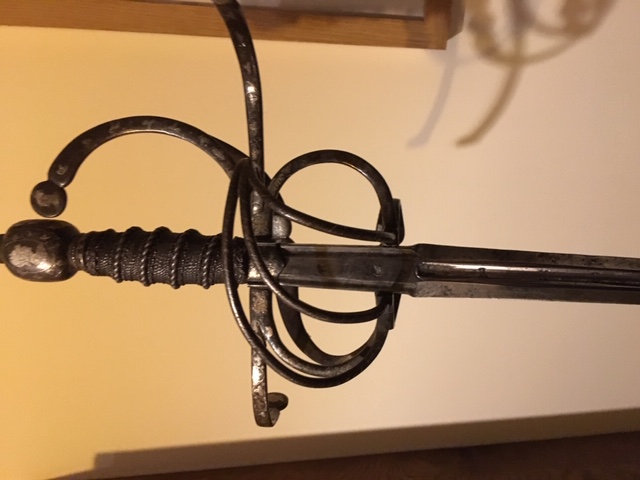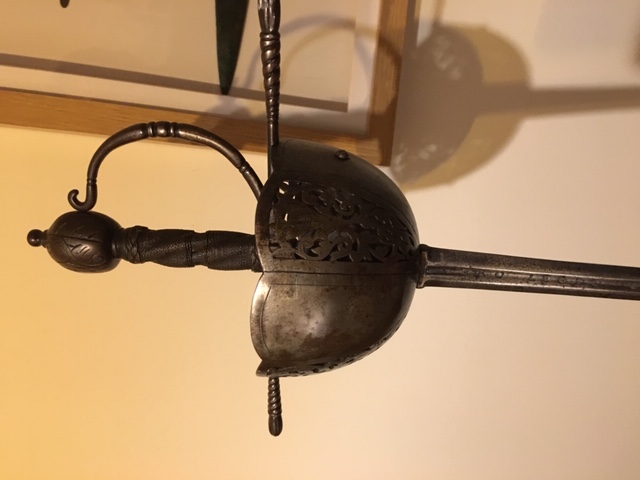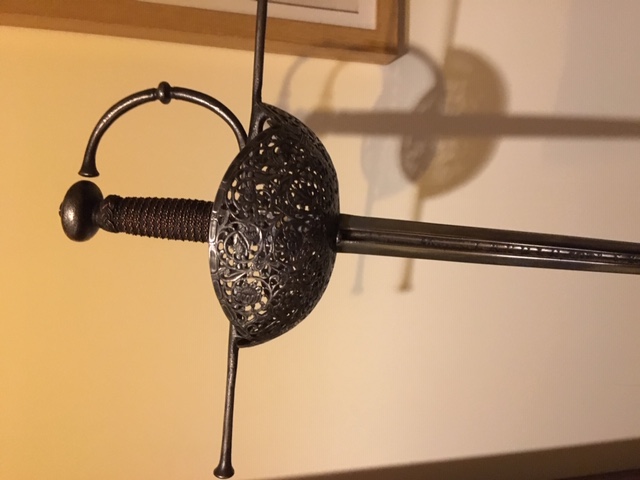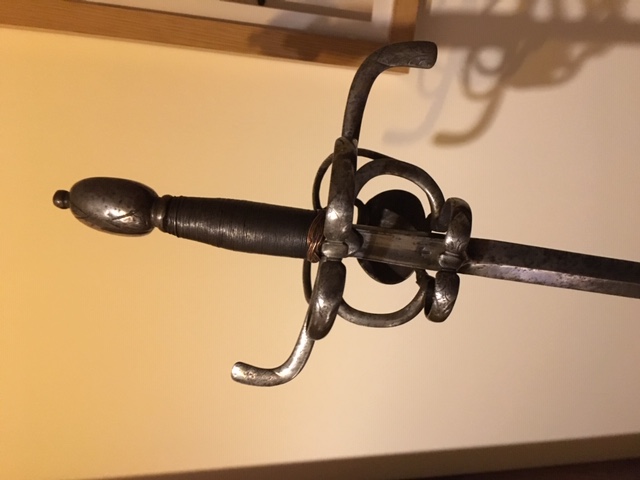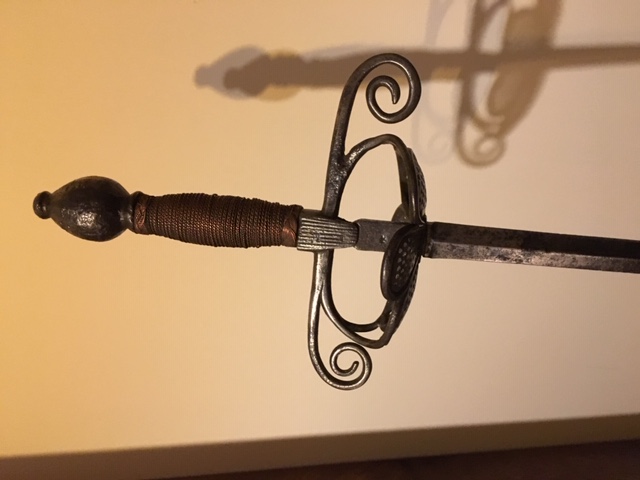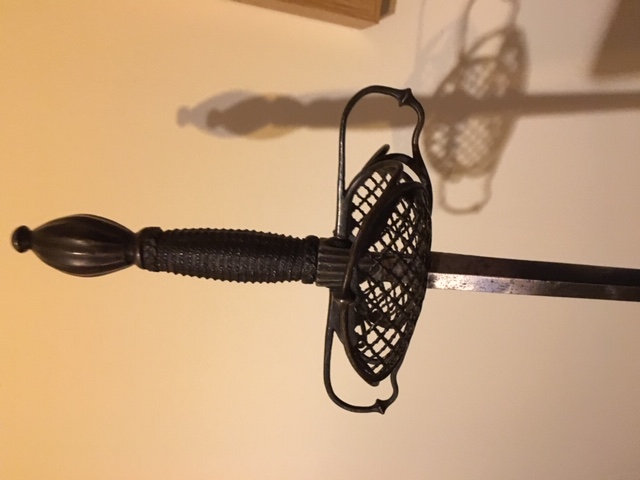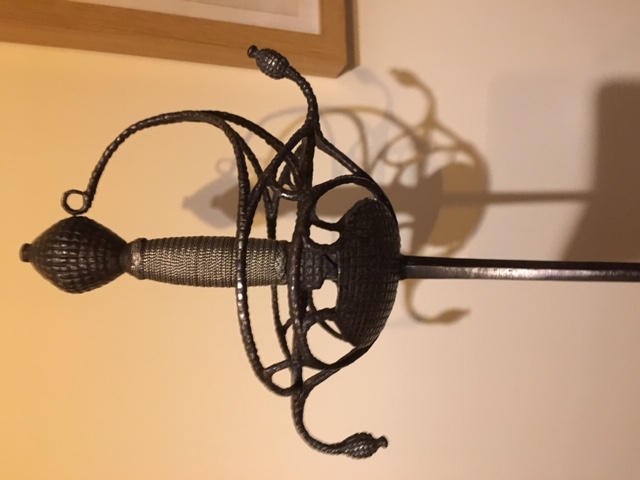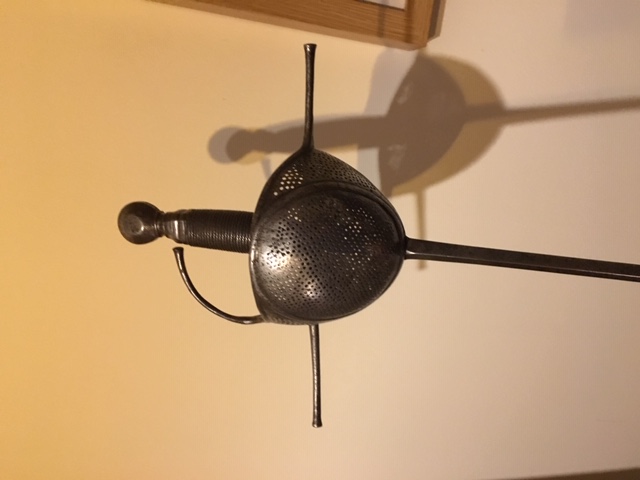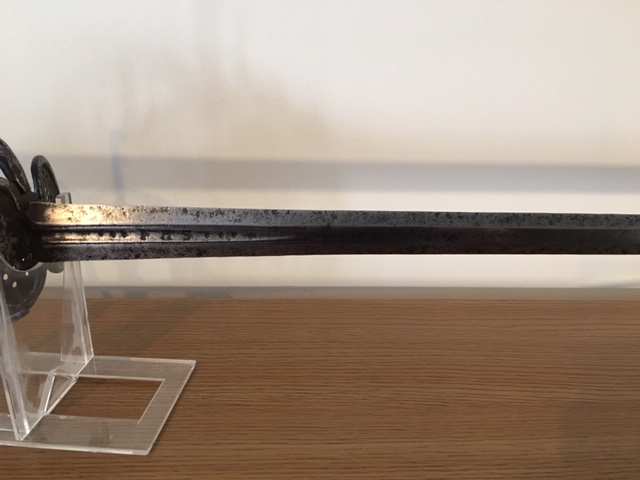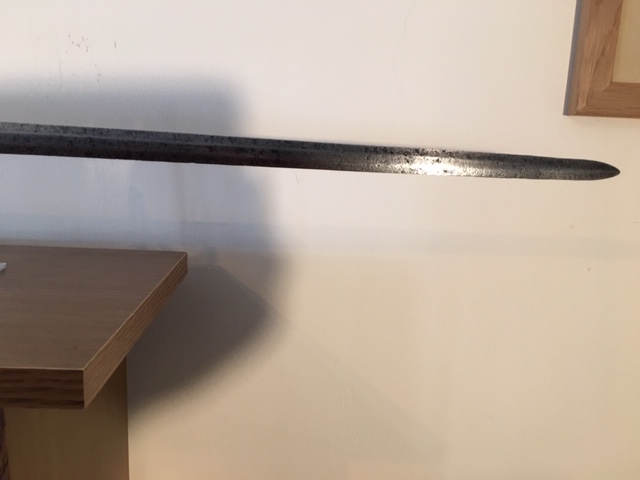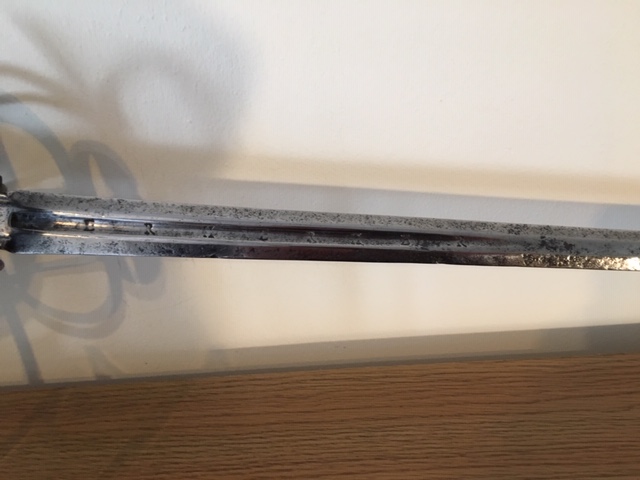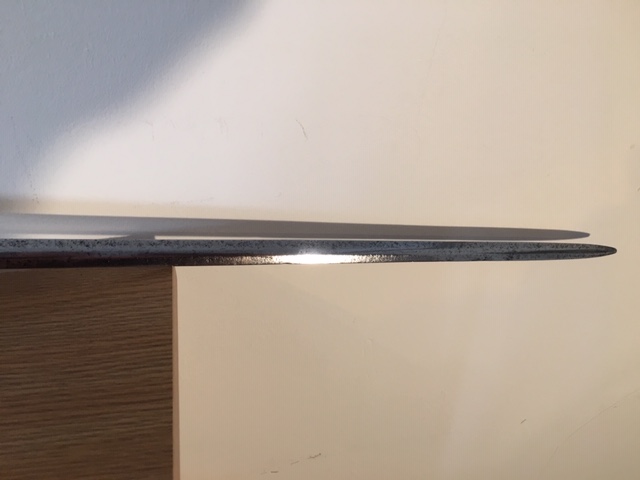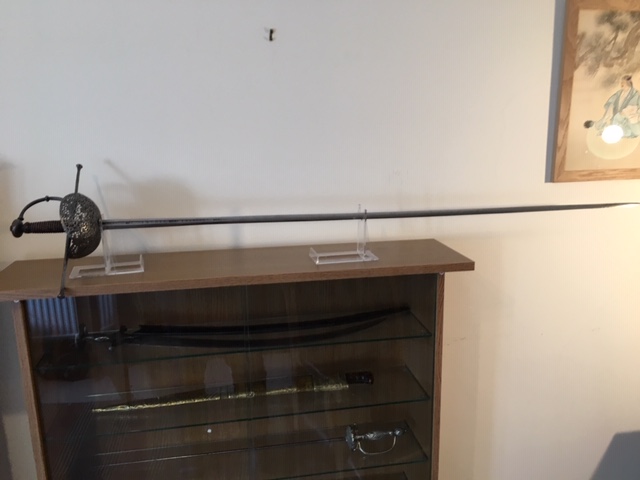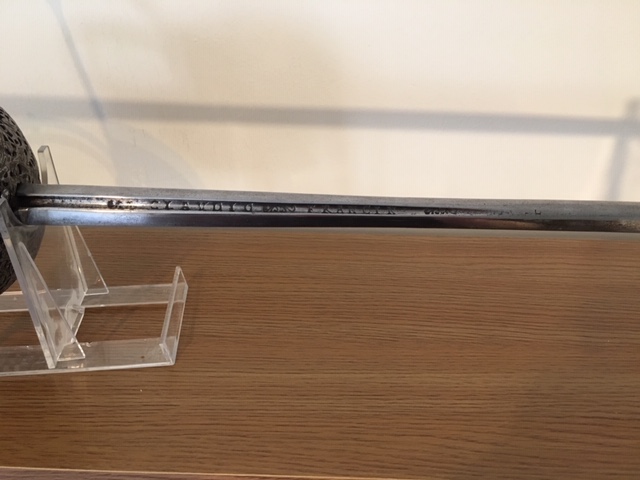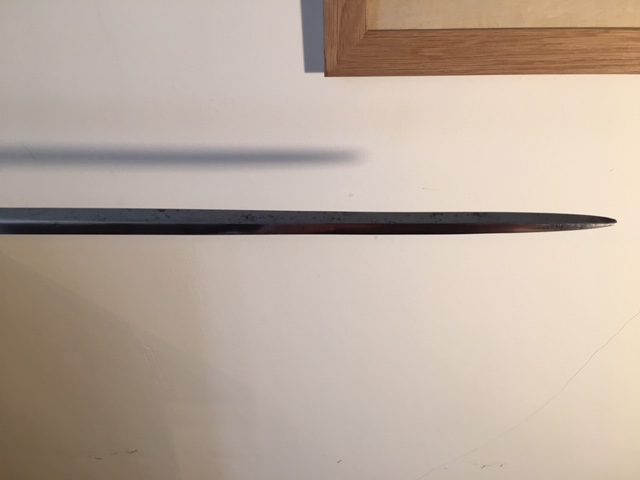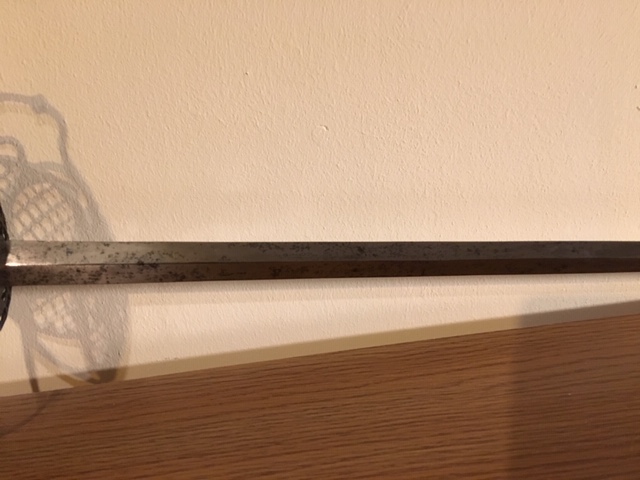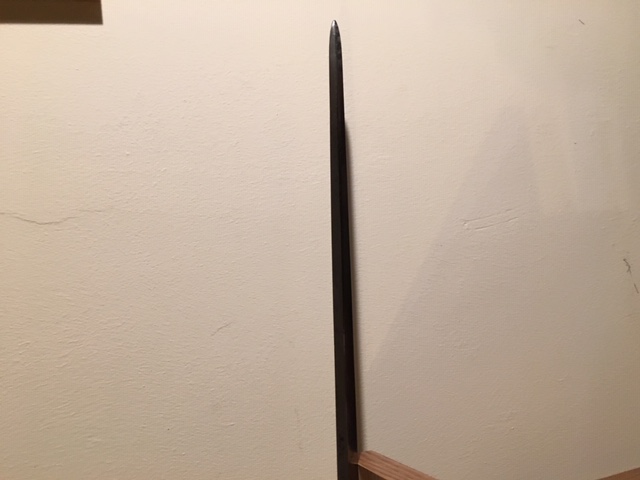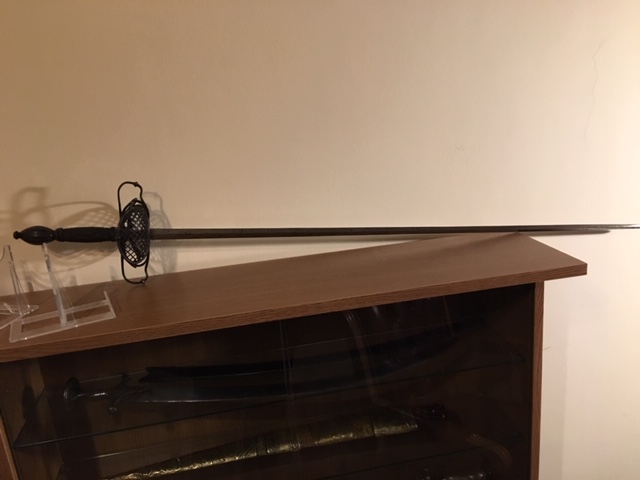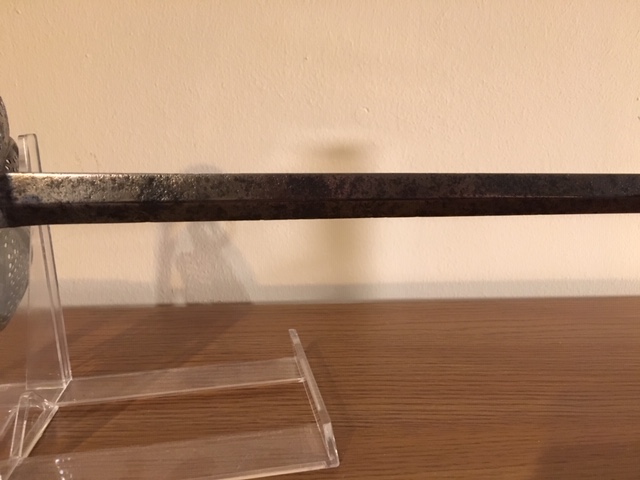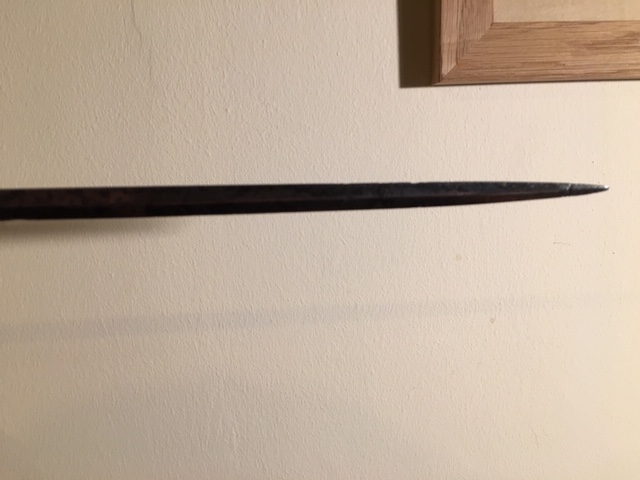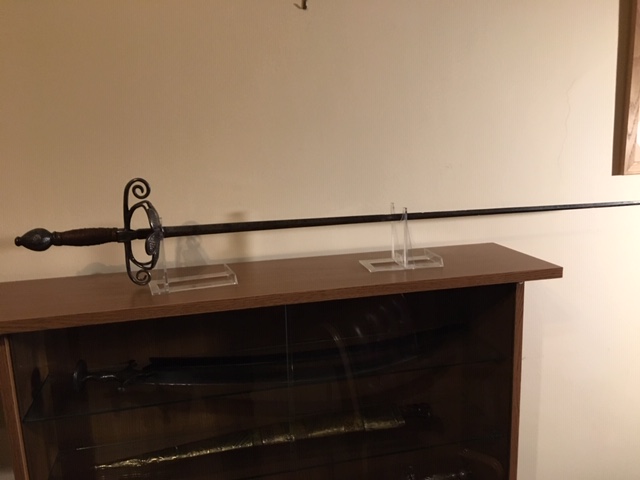1. Hexagonal section with short and relatively shallow fuller – late 16th and early 17th century. These blades are often substantial and, whilst tapering, do not taper acutely and have a distinct edge and can be used for cutting or thrusting. The rapiers with these blades tend to be a bit blade heavy. Bottom 3 photos.
2. Similar to above but the blade narrows and has a deep I-beam fuller – late 16th and throughout 17th century. These blades I see as an evolution of type 1. Above. The blade is hexagonal section in the last third toward the hilt with the blade thickening greatly in this section and at the ricasso. The remainder of the blade may be hexagonal or lenticular in cross section and tapers more acutely than type 1. It may have an edge in the last third of the blade but it is clearly more of a thrusting blade. The I-beam type fuller gives strength and flexibility to the narrower blade. This type remains in use particularly on Spanish and Italian cup hilts into the later 17th century. Swept hilt and cup hilt photos.
3. Flat diamond section of varying width – early 17th century throughout 17th century. These blades are flat diamond section throughout and have an edge on the wider (flatter diamond section) examples. As a result of their flatter cross section and lack of thick forte and deep fuller they have considerable flexibility. The rapiers I have seen or owned with this blade type tend to be a bit shorter (37-39 inches from the guard) than other rapiers and generally light hilted Northern European. English rapier with black hilt..
4. As type 3 but narrower – 17th century. These are also diamond section throughout with no fuller but are narrower and stiffer blades but still with flexibility. Often light in weight.. Petal shaped guard English rapier and earlier military rapier (last photo)
5. The steel bar - early 17th century throughout 17th century. These are pure thrusting rapiers evolved from 4 most probably. They are thick diamond section, almost square section in some cases towards the hilt. They have no edge save for a possible strammazone tip for the last 6 inches as shown in the Spanish cup hilt in the photos below. English swept hilt and Spanish boat cup hilt photos.
What is of interest to me and which those who practice historical fencing can assist with maybe is that all these blade types co-existed in the first half of the 17th century. There is such a difference in weight, design, dynamics and potentially method of use between the needle bladed English swept hilt below, the light-weight flexible flat diamond black rapier which has a keen cutting edge for the whole length of the blade, the much heavier, long and stiff bladed ring hilt and the chiselled Spanish cup hilt with the I-beam fuller and very long 45 inch blade. But they were all made within about 20-30 years of each other, 1620-1650 (a bit later for the cup-hilt maybe). And there seems no clear linear evolution from one type to another; they co-existed. To me the reason for that must be either: different uses; different fencing schools; or different regions. But I don’t see any clear evidence for a definite regional differentiation although certain countries did tend toward certain types of blade to a degree. So I think it is down to use or fencing method. We often discuss what is a rapier. A sword of a certain period and broad type with a long, narrow blade is often categorised as such. But I increasingly find them very different, particularly in the first half of the 17th century (16th century is more consistent I find).
The ring hilts are interesting. I own one and have handled several more at fairs, auctions and people's collections though they are not that common to find. I find generally (I know there are variants) that they tend to be long, substantial, stiff bladed and heavy with more of a blade heavy balance than most rapiers. I have discussed this with one of the collectors on myArmoury who is of the view this type may have been used from horseback. I must say I can see this viewpoint. The ones I have handled have very different weight and characteristics to most rapiers I have come across from that period and I can see them being used as a straight cavalry sword rather than a purely civilian duelling weapon. It just interests me - the variance in design, weight, cutting vs thrusting etc. in such a short period and at the same time, I wanted to post more photos of more examples but there is a size limit to uploads. I may have to add photos on a second post.
I would be interested in people's views.
Daniel
